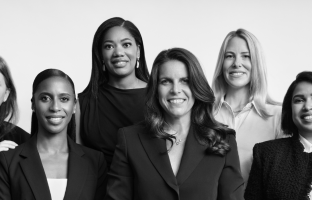This blog was originally published in 2021.
Brandon Tseng (MBA 2017) remembers his aha moment. It was April 2015, and Tseng was a US Navy SEAL approaching the end of seven years’ service; his next step would be Harvard Business School. Tseng was reading about a military effort to create robotic armor, a project known in the press as the “Iron Man suit.” The idea seemed absurd—but not because of the comic-book connotations. Tseng, with a background in mechanical engineering and on-the-ground experience in actual conflict zones such as Afghanistan, where the so-called Iron Man would be deployed, couldn’t understand why the military would design a high-tech armored suit for a person when artificial intelligence could do the job with significantly less risk. “Why wouldn’t they just put in a computer to control the suit?” he wondered.
“‘Good mission, but it sounds like a horrible business idea,’” Tseng recalls his older brother, Ryan, telling him. Ryan Tseng had already started two successful companies, and where Brandon saw a business opportunity in building AI software to operate unmanned systems for the military, Ryan saw a behemoth defense industry with high barriers to entry. “I think he was also just—as older brothers can be—skeptical of his younger brother,” Brandon says, laughing. It’s easy to laugh: Today, the brothers are cofounders of Shield AI, a rapidly growing artificial intelligence company based in San Diego, with offices in Washington, DC, and Pittsburgh, and Shield AI’s unmanned Nova drones are used in war zones around the world.
Brandon Tseng calls it “self-driving technology for defense.” The long-distance, 2.8-pound quadcopter drones, running on Shield AI’s Hivemind software, can navigate through buildings without a pilot, streaming video back to an Android phone to provide real-time reconnaissance of potentially hazardous spaces. The quadcopter functions in total darkness, in buildings it has never previously entered, and flies without prior knowledge or programming of the space—even in areas without GPS or communications links.
Although Tseng cannot share the particulars of the classified missions in which Shield AI’s technology has been deployed, he says that it is being used in “indoor-clearance” situations, which are some of the most harrowing missions that troops can face. According to the Department of Defense, US special forces make up just 3 percent of the US armed services but have accounted for over half of combat casualties in recent conflicts. Most of those occur in close, urban combat, as service members go building by building in search of hidden threats.
“We hear things like, ‘This product made a difference. Had we not had this, things could have turned out far differently,’” Tseng says. “I know what that means: Someone could have gotten killed.”
If Brandon Tseng was prescient about the demand for technology that could reduce the risks associated with indoor clearance operations, Ryan Tseng proved right in foreseeing obstacles to building a startup in the defense sector in the mid-2010s. Ryan had been persuaded to join the endeavor after hearing the enthusiasm of the scores of potential users Brandon interviewed prior to launch. But the pair did not initially encounter the same positive reception from investors.
Two weeks before Brandon joined his HBS cohort on campus in the fall of 2015, he went to Silicon Valley to raise funds for Shield AI. The Tsengs and a third cofounder, Andrew Reiter, pitched to 30 investors. All 30 said no, with one suggesting that the trio pivot to producing “selfie drones” for consumers. Brandon Tseng was adamant. “We didn’t quit our jobs to do something in the commercial sector,” he says. “We quit our jobs to pursue the mission of protecting service members and civilians.”
The company may have been a little ahead of its time, Tseng says. The defense sector’s relationship with commercial startups was already beginning to change. That same year, the US Department of Defense established the Defense Innovation Unit in Silicon Valley to encourage early-stage companies in the sector. Tseng continued to work on Shield AI during his time at HBS, and the School’s network helped the company secure a $2 million seed round in 2016. The company recently closed its Series C, for a total of more than $145 million in investment.
Although Tseng had a clear idea of the product he wanted to build, he wasn’t as certain what the company would look like as it grew, from fewer than 30 employees in 2017 to more than 190 today. “I came from the military; I had never worked in a formal company before,” says Tseng, who is now Shield AI’s COO. (Ryan Tseng serves as CEO.) But his experience as a SEAL did have its benefits. “In the SEAL Teams, you operate in extremely ambiguous situations. You are marching toward a clear goal but with no real clear path,” he adds. “I think that skill set has transitioned well to the world of entrepreneurship.”
Tseng says the company is on track for continued rapid growth in 2021. The drones he envisioned are a reality, and now Tseng is thinking bigger. Shield AI is integrating its self-driving technology on larger, unmanned aerial vehicles this year, partnering with leaders in both the defense and technology industries to bring their AI capabilities to a wider range of vehicles. The future of the US military isn’t going to look like Iron Man, Tseng acknowledges, but with AI, it will be “a world where our military can do more with less and assume a lot less risk.”
Photo by Christina Gandolfo. This article originally appeared in Alumni Stories in 2021.






.png&w=80&h=80)
